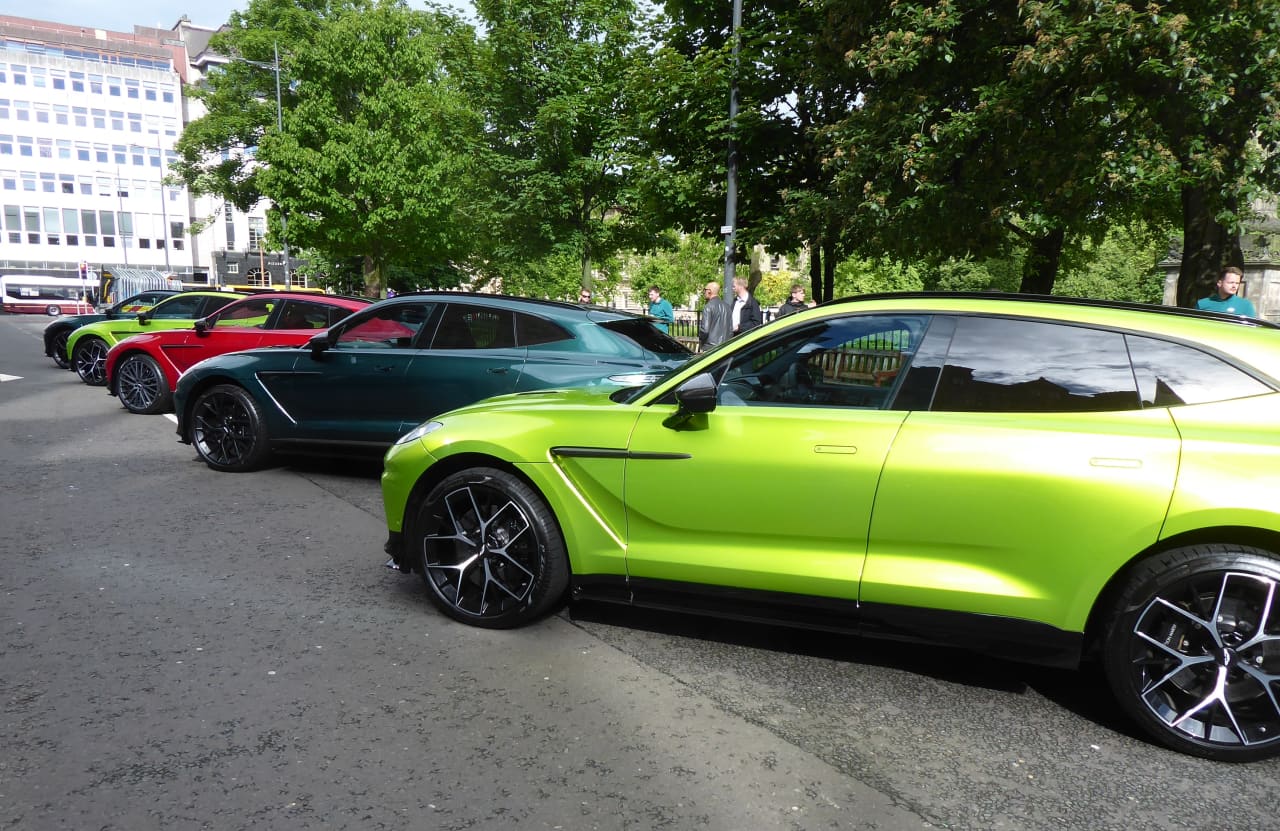Want Power? Stop Saying ‘Sorry’ So Much
Apologies have become more of a reflex than a real expression of contrition and overusing them might be holding you back
Sorry, I’m just now seeing your email! (You sent it 15 minutes ago.)
Sorry that you completely misinterpreted that thing I said.
Sorry you just rammed into me with your grocery-store cart.
The apology is running amok in conversations and communications. We drop it indiscriminately, crying mea culpa for all manner of things we really shouldn’t be sorry for—and diluting the apologies that truly matter. Is it time to stop? Could we even cut back if we wanted to?
“I wasn’t really that sorry,” admits Louise Julig, a freelance writer in Encinitas, Calif., who found she was constantly apologising for the “delay” when replying to notes, even when there wasn’t much of a delay at all. “Why am I saying this thing? I don’t know.”
“Sorry” has lost its meaning, she realised, no longer a heartfelt declaration of remorse but a knee-jerk response. Now, faced with the blinking cursor of a blank email, Ms. Julig asks herself, did I legitimately miss something, or mess someone else up? If the answer is no, she’s not sorry.
“Don’t give away your power,” counsels Jeffrey Pfeffer, a professor of organisational behaviour at Stanford Graduate School of Business and author of a book about commanding authority at work. Apologising in business, especially when you’ve actually done something wrong, is just asking for trouble, he says.
People are never satisfied with an apology, he adds. Grovelling and exhibiting vulnerability only make you look weak and sink team morale.
Standing your ground comes with risks, he allows. You’ll piss some people off. You might not be liked. He thinks it’s worth it.
“You can either conform to what people want you to be, or you can decide that you are going to risk offending people,” he says. “Life is about trade-offs.”
When I searched my sent emails for the phrase, “Sorry for the delay,” the result was too many hits for Gmail to give me an exact count.
I tried, in the course of reporting this column, to cut back on my apologies. Mostly I failed, catching myself exclaiming sorry! when dialling in three minutes late for a call. A person I contacted for this piece apologised for only being available one of the days I suggested we chat, not the other. I flashed back to a clip of Taylor Swift, in which she apologises for “getting on her soapbox” about misogyny, then quickly catches herself.
“We’re, like, ‘Sorry, was I loud?’” the pop star says in “Miss Americana,” the Netflix documentary. “In my own house that I bought. With the songs that I wrote. About my own life.”
Words have consequences.
“Always feeling like you need to say ‘sorry’ makes you kind of feel like crap,” says Jen Fisher, the chief well-being officer for Deloitte. Last year, she logged her own apologies, flagging the ones that felt unnecessary and replacing them with expressions of gratitude.
Have to move a meeting? Try, “I appreciate your flexibility,” or “I’m grateful for your understanding,” she says. Remember that it’s not your responsibility to apologise for things out of your control, such as the weather or a client moving a deadline. Putting “sorry” on loop waters down the moments when you really do need to show remorse, she adds.
And of course, people often wield “sorry” to mean exactly the opposite, more a passive-aggressive insult than real contrition.
Shedding “sorry” can be empowering. Hannah Szabo grew up in Wisconsin, where—as in much of the Midwest, Canada and other regions—“sorry” sometimes serves as a conversation starter. She would drop one in during a pause in conversation, or when she felt uncomfortable.
Then she moved to Brazil. She was shocked to find that the students she was teaching barely apologised. At first, she was offended. Now, she basks in a culture without reflexive apologies.
Back in the Midwest on a recent trip, she almost grew angry when her mother apologised for accidentally sticking her seat belt in the wrong buckle.
“That does not qualify for a sorry, Mom,” she told her. “Take that back.”
Women apologise more than men, but a female co-worker’s apology doesn’t necessarily mean she’s claiming blame, says Deborah Tannen, a linguistics professor at Georgetown University. She might just be trying to get her work done with a dose of graciousness, for example smoothing over a misunderstanding with, “Sorry, what I meant was…”
“Everything we’re doing is on some level trying to show we’re a good person at the same time that we’re trying to accomplish something,” Dr. Tannen says.
When I message “So sorry to bug you…” to my boss before asking a question that’s a necessary part of both our jobs, I’m showing respect for power differentials at the office, Dr. Tannen notes.
Still, some misinterpret women’s apologies as incompetence. When British leader Liz Truss last week apologised “for the mistakes” in pushing a risky tax plan, it was met with calls to resign. A few days later, she did.
Be aware of how others respond when you use words of contrition, Dr. Tannen cautions. If colleagues call out your apologising, you might explain that you were just saying you were sorry a thing happened, and not sorry sorry. If you hear that feedback often, consider an audit like Ms. Fisher’s.
Kingston Vickers tried. After moving to Texas years ago, the native Canadian resolved to remove the “ehs” and “sorrys” from his vocabulary. Doing so consumed so much mental effort that he grew flustered when talking and wasn’t as effective at his sales job.
Now he embraces his proclivity for apologies, and says his work has benefited. Apologising for his clients’ struggles or when he’s about to make an ask of them, builds trust, he says. It’s also a way of showing empathy.
“People underestimate the power of a kind word nowadays,” he adds.
 Copyright 2020, Dow Jones & Company, Inc. All Rights Reserved Worldwide. LEARN MORE
Copyright 2020, Dow Jones & Company, Inc. All Rights Reserved Worldwide. LEARN MORE
This stylish family home combines a classic palette and finishes with a flexible floorplan
Just 55 minutes from Sydney, make this your creative getaway located in the majestic Hawkesbury region.
As Paris makes its final preparations for the Olympic games, its residents are busy with their own—packing their suitcases, confirming their reservations, and getting out of town.
Worried about the hordes of crowds and overall chaos the Olympics could bring, Parisians are fleeing the city in droves and inundating resort cities around the country. Hotels and holiday rentals in some of France’s most popular vacation destinations—from the French Riviera in the south to the beaches of Normandy in the north—say they are expecting massive crowds this year in advance of the Olympics. The games will run from July 26-Aug. 1.
“It’s already a major holiday season for us, and beyond that, we have the Olympics,” says Stéphane Personeni, general manager of the Lily of the Valley hotel in Saint Tropez. “People began booking early this year.”
Personeni’s hotel typically has no issues filling its rooms each summer—by May of each year, the luxury hotel typically finds itself completely booked out for the months of July and August. But this year, the 53-room hotel began filling up for summer reservations in February.
“We told our regular guests that everything—hotels, apartments, villas—are going to be hard to find this summer,” Personeni says. His neighbours around Saint Tropez say they’re similarly booked up.
As of March, the online marketplace Gens de Confiance (“Trusted People”), saw a 50% increase in reservations from Parisians seeking vacation rentals outside the capital during the Olympics.
Already, August is a popular vacation time for the French. With a minimum of five weeks of vacation mandated by law, many decide to take the entire month off, renting out villas in beachside destinations for longer periods.
But beyond the typical August travel, the Olympics are having a real impact, says Bertille Marchal, a spokesperson for Gens de Confiance.
“We’ve seen nearly three times more reservations for the dates of the Olympics than the following two weeks,” Marchal says. “The increase is definitely linked to the Olympic Games.”

Getty Images
According to the site, the most sought-out vacation destinations are Morbihan and Loire-Atlantique, a seaside region in the northwest; le Var, a coastal area within the southeast of France along the Côte d’Azur; and the island of Corsica in the Mediterranean.
Meanwhile, the Olympics haven’t necessarily been a boon to foreign tourism in the country. Many tourists who might have otherwise come to France are avoiding it this year in favour of other European capitals. In Paris, demand for stays at high-end hotels has collapsed, with bookings down 50% in July compared to last year, according to UMIH Prestige, which represents hotels charging at least €800 ($865) a night for rooms.
Earlier this year, high-end restaurants and concierges said the Olympics might even be an opportunity to score a hard-get-seat at the city’s fine dining.
In the Occitanie region in southwest France, the overall number of reservations this summer hasn’t changed much from last year, says Vincent Gare, president of the regional tourism committee there.
“But looking further at the numbers, we do see an increase in the clientele coming from the Paris region,” Gare told Le Figaro, noting that the increase in reservations has fallen directly on the dates of the Olympic games.
Michel Barré, a retiree living in Paris’s Le Marais neighbourhood, is one of those opting for the beach rather than the opening ceremony. In January, he booked a stay in Normandy for two weeks.
“Even though it’s a major European capital, Paris is still a small city—it’s a massive effort to host all of these events,” Barré says. “The Olympics are going to be a mess.”
More than anything, he just wants some calm after an event-filled summer in Paris, which just before the Olympics experienced the drama of a snap election called by Macron.
“It’s been a hectic summer here,” he says.

AFP via Getty Images
Parisians—Barré included—feel that the city, by over-catering to its tourists, is driving out many residents.
Parts of the Seine—usually one of the most popular summertime hangout spots —have been closed off for weeks as the city installs bleachers and Olympics signage. In certain neighbourhoods, residents will need to scan a QR code with police to access their own apartments. And from the Olympics to Sept. 8, Paris is nearly doubling the price of transit tickets from €2.15 to €4 per ride.
The city’s clear willingness to capitalise on its tourists has motivated some residents to do the same. In March, the number of active Airbnb listings in Paris reached an all-time high as hosts rushed to list their apartments. Listings grew 40% from the same time last year, according to the company.
With their regular clients taking off, Parisian restaurants and merchants are complaining that business is down.
“Are there any Parisians left in Paris?” Alaine Fontaine, president of the restaurant industry association, told the radio station Franceinfo on Sunday. “For the last three weeks, there haven’t been any here.”
Still, for all the talk of those leaving, there are plenty who have decided to stick around.
Jay Swanson, an American expat and YouTuber, can’t imagine leaving during the Olympics—he secured his tickets to see ping pong and volleyball last year. He’s also less concerned about the crowds and road closures than others, having just put together a series of videos explaining how to navigate Paris during the games.
“It’s been 100 years since the Games came to Paris; when else will we get a chance to host the world like this?” Swanson says. “So many Parisians are leaving and tourism is down, so not only will it be quiet but the only people left will be here for a party.”
This stylish family home combines a classic palette and finishes with a flexible floorplan
Just 55 minutes from Sydney, make this your creative getaway located in the majestic Hawkesbury region.






















